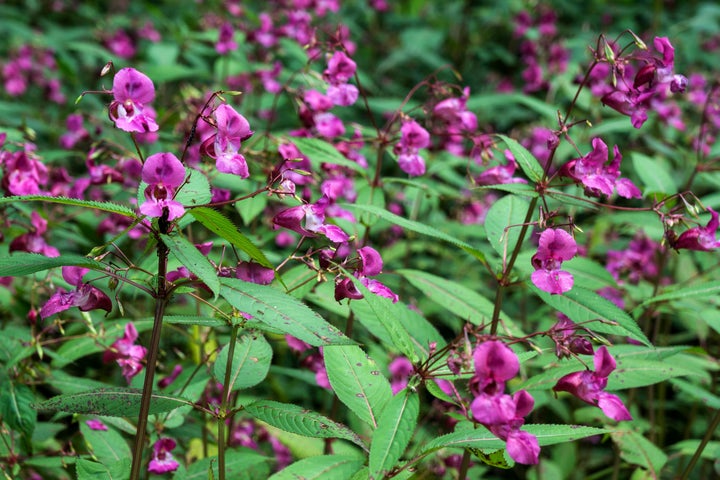
Happy first day of spring! Finally! Time for lazing in the garden with your favourite chilled drink, perhaps some of your favourite plants and, uh, exploding flowers?! Cool!
Yes, if you were wondering which fresh hells we had ahead of us this year, let us tell you all about the Himalayan balsam, also known as Himalayan touch-me-not, which has been distributed across the UK and is considered to be one of the most ‘dangerous’ species.
This deceptively sweet-looking bloom which was introduced into the UK in 1839 from northern India, according to the Royal Horticultural Society (RHS), is becoming a problem throughout the UK as it is a highly-invasive species that spreads quickly.
Why is the Himalayan balsam plant a problem?
According to the RHS, each Himalayan balsam plant can produce up to 800 seeds. These are dispersed widely as the ripe seedpods shoot their seeds up to 7m (22ft) away.
While the plant is ‘safe’ to touch in the sense that you won’t be physically harmed by the flower if you touch it, the widespread explosion of these seeds can be extremely problematic for your garden or the park that you see them in.
For example, once established in the catchment of a river the seeds, which can remain viable for two years, are transported further afield by water.
Himalayan balsam is listed under Schedule 9 of the Wildlife and Countryside Act 1981 with respect to England and Wales. As such, it is an offence to plant or otherwise allow this species to grow in the wild and was included in Scotland by the end of 2011.
How to stop Himalayan balsam spreading in your garden
According to RHS, the main method of non-chemical control, and usually the most appropriate, is pulling or cutting the plants before they flower and set seed. In fact, in hilarious news, conservation authorities regularly organise ‘balsam bashing’ work parties to clear the weed from marshland and riverbanks.
Just an FYI to those authorities: I am down for this party.
However, if they have already started to spread in your garden or land, the best course of action is good ol’ weed killer.
Take care when applying weedkillers near ornamental plants. Cover them with plastic sheeting while spraying, and only remove it once the spray has dried on the weed foliage.
Before using weedkillers alongside waterways it is necessary to contact the Environment Agency. It can advise on suitably qualified contractors, as can the National Association of Agricultural and Amenity Contractors.
If you’re unsure of what to do, get in touch with your local Environment Agency to learn the best course of action.
If nothing else, don’t touch them!